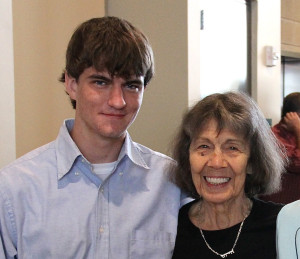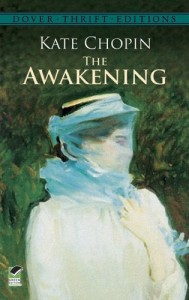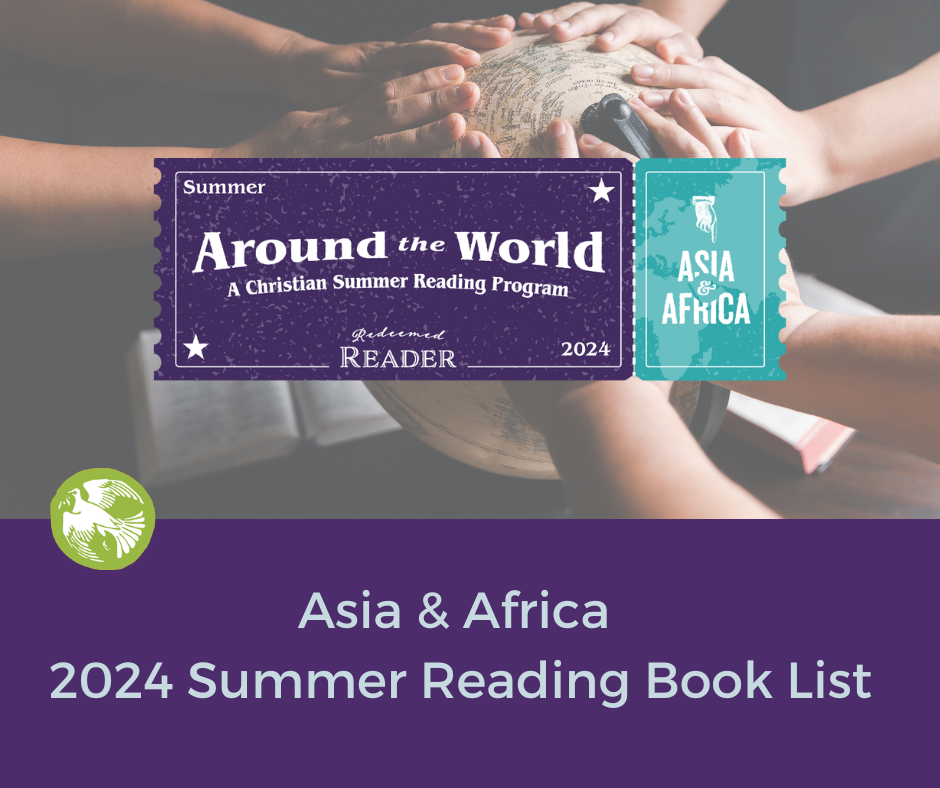Reviewing School Book Lists: Part One. Part Two. Part Three. Part Four.
(SUICIDE LIFELINE: 1-800-273-8255)
Death of a Son
On Monday morning, rumors swirled at Westwood High School that Nathan Austin, a senior, had died. Perhaps even taken his own life. Several teachers hurried to the principal’s office to find out the truth and put such rumors to rest. Surely that’s all these were—unfounded rumors. 
Nathan earned the nickname “Tigger” from his friends and family for his ebullient personality. He was also an excellent student. Homeschooled until 7th grade using a mostly literature-based curriculum (Horizons), Nathan missed being a National Merit Scholar by only 1 point. Yet his book-learning had not left him uncaring or distant. Besides his friends and family who considered him exceptionally compassionate, two teachers claimed that he saved their careers by leading other students to accept them.
The reality that April morning, however, was that Nathan’s father, Paul, had found Nathan unconscious in his room. After nearly an hour of trying to resuscitate Nathan, the awful truth began to set in. His son was gone. And as he and his wife walked through the next few days, weeks, months, the obvious question for Paul has been, “Why?”
The answers, of course, have not been simple. As Jill Harkavy-Friedman of the American Foundation for Suicide Prevention (AFSP) explained to me in an interview last July, people don’t usually commit suicide for one or two reasons. There is usually a convergence of many factors, including two which are critical in pushing someone over the edge: 1) exposure to how-to information and 2) a trigger.
And while factors like Nathan’s grandmother’s death undoubtedly played a part, Paul Austin believes his son may have gotten both the how-to information and trigger from his AP English course.
AP English Literature’s Role
I will post the entire list of books eventually so that you can judge for yourself the cumulative effect of those books. For now, let’s look at these two critical factors. First, the how-to information. The summer before 12th grade, Nathan was assigned to read Arthur Miller’s play, The Death of a Salesman. In his list of questions to answer about the book, Nathan was asked to answer, “What hidden object has Linda recently discovered and why does it concern her?”
Since the story implies that the father commits suicide, in order to answer the question, Nathan likely searched out information on how the object might have been used for that purpose. Given that Nathan later used a variation of that method himself, it is very possible that while doing his homework assignment, Nathan found the how-to information for his own suicide.
It’s worth noting that the book did not have to be studied this way. Instead of asking kids to research on their own time how certain objects might be used for suicide, that information might have  been presented in class with limited detail.
been presented in class with limited detail.
Second, concerning the trigger, as best his parents have been able to piece together, the last book that Nathan read was The Awakening by Kate Chopin. At the end of this book, a woman decides that suicide is her best option and the reader follows the character as she drowns herself. In this case, as in The Death of a Salesman, the author does not call to mind all the people the woman leaves behind, all the people she is hurting. Chopin doesn’t show other options that the woman might have taken. Romanticizing the act and not putting suicide in its full context (including the pain felt by those left behind) are critical risk factors for copycat deaths.
Harkavy-Friedman pointed out in our interview that teachers don’t have to ban these books–they can often bring a bigger perspective to the conversation themselves, even if an author doesn’t. They can hand out suicide lifeline numbers, and remind teens that suicide isn’t a romantic answer to life’s problems. The school can also host a More Than Sad training program to help bring awareness to faculty and students.
In Nathan’s case, however, his parents have no indication that his teacher provided such perspective.
Who Is Affected?
Since Robin Williams’ death, USA Today reports that calls to crisis centers have surged. In fact, the National Suicide Prevention Lifeline they received more calls the day after Williams’ death than ever before in their history. (The official number was 7,500 calls, though that doesn’t include potentially eight times that many calls received at local call centers.) That won’t surprise anyone who is familiar with the history of suicide. Reading and hearing stories about suicide—whether journalistic stories or books read in the classroom—has been well-documented to cause copycats or “suicide contagion.” As early as 1774, the phenomenon was originally called the Werther effect after a character in a Goethe novel.
Why then do schools like Nathan’s ignore the problem? One reason may be that society simply does not realize how many teens are at risk. Among teens like Nathan, suicide is the third leading cause of death. A 2011 study by the Center for Disease Control (CDC) showed that 15.8% of students in grades 9-12 had seriously considered suicide in the previous 12 months. And for every 1 who succeeds, over 100-200 more teens attempt to take their lives. (CDC Suicide Factsheet)
Clearly most teens who read stories about suicide do not take their own lives. But with more than 100 people taking their lives every day in America, Nathan’s experience isn’t an isolated incident. And stories and other media clearly have a significant impact.
What Some Writers Are Doing
Among journalists, there have been a number of studies showing up to an 80% decrease in copycat suicides when journalists follow certain guidelines. Those include not revealing specifics of how-to information, not romanticizing the person’s death, and providing crisis center hotline numbers within their pieces. (Here is a link to journalistic guidelines.)
In terms of the challenges posed by literature, Harkavy-Friedman is positive about the impact their training programs are making in school literature classes, as well as the in-roads they are making with publishers and authors. Even big-name authors like James Patterson are working with her organization for advice on how to write about suicide in a more responsible way.
SUICIDE LIFELINE: 1-800-273-8255 One School’s Response
 Last spring, Paul Austin and his wife Karen sat down with their son’s former school administrators and teachers, hoping to share some of their discoveries. Both Paul and Karen are on good terms with the school and have no ill feelings toward the faculty. They say that books and teachers didn’t kill their son, mental illness did. But they hoped something could be done in Westwood High School to help other teens who may face the same challenges their son faced.
Last spring, Paul Austin and his wife Karen sat down with their son’s former school administrators and teachers, hoping to share some of their discoveries. Both Paul and Karen are on good terms with the school and have no ill feelings toward the faculty. They say that books and teachers didn’t kill their son, mental illness did. But they hoped something could be done in Westwood High School to help other teens who may face the same challenges their son faced.
While Paul worries the books his son studied were overly depressing, he did not ask for books to be changed during their meeting. He believed that would shut down conversation and label him a book banner.
Instead, he and Karen asked for the school to look into changing the presentation of the books. Paul and Karen brought up the possibility of mental health screenings for kids in the AP English class, much like the school requires physical check ups for kids who play football. If nothing else, they hoped that training might be given to faculty or warning statements given to parents and teachers to help them identify struggling kids.
Yet all of these suggestions were met with a shrug. While clearly the teachers and administrators cared about Nathan and his family, they did not believe his death merited any changes to their school curriculum or policies.
Why Not?
Why were teachers so shocked by Nathan’s death? And why are those same teachers and administrators so resistant to taking simple, common-sense steps to protect other kids? Like Paul Austin’s original question as to why his son would commit suicide, these questions aren’t simple either. But I do hope to attempt an answer in upcoming posts.
Until then, I would love to hear your thoughts on this topic. Are you as a parent or are the teachers and administrators in your area aware of the connection between literature and suicide? Why or why not? What do you think are some of the stumbling blocks to making adults aware of these challenges?
Stay Up to Date!
Get the information you need to make wise choices about books for your children and teens.
Our weekly newsletter includes our latest reviews, related links from around the web, a featured book list, book trivia, and more. We never sell your information. You may unsubscribe at any time.
Support our writers and help keep Redeemed Reader ad-free by joining the Redeemed Reader Fellowship.
Stay Up to Date!
Get the information you need to make wise choices about books for your children and teens.
Our weekly newsletter includes our latest reviews, related links from around the web, a featured book list, book trivia, and more. We never sell your information. You may unsubscribe at any time.
We'd love to hear from you!
Our comments are now limited to our members (both Silver and Golden Key). Members, you just need to log in with your normal log-in credentials!
Not a member yet? You can join the Silver Key ($2.99/month) for a free 2-week trial. Cancel at any time. Find out more about membership here.
7 Comments
Leave a Comment
You must be logged in to post a comment.




What a sad situation. It would be great if the school took some actions to help students process literature in a healthy way, or paused to think more carefully about their selections. I have been particularly concerned at hearing about SUMMER reading choices of some schools lately, asking children to read about difficult topics on their own without teacher guidance.
At the same time, parents need to be aware of what their children are reading and what effect it is having on them. Reading everything your children read is difficult or downright impossible. We need more sites like yours! A website like kids-in-mind.com with an extensive collection of books would be very valuable for knowing about issues that might sneak in through your children’s reading and merit some family discussion.
The biggest stumbling block I see is the “We know better” attitude of some school administrators and teachers that shuts out parent suggestions. I say this as someone who was a young teacher and felt threatened and annoyed by parents questioning my choices. I worked with teachers who felt their job was to teach against what the parents taught at home. Parent input has, in some places, lost its value to educators. You can see evidence of this in the story you’ve told by the parents’ fear of being labelled as censors.
Great points, Gina. Actually, The Death of a Salesman was a summer reading assignment for Nathan, too. And I do think that is more problematic than reading with a good teacher.
Very interesting also to hear about your time as a teacher. Thanks for your insights!
I agree with Gina that public school doesn’t like parent interference with their teaching or curriculum. I say this as someone who taught in public school for nine years.
Also, it seems that the bulk of literature for students seems to be very dark. Instead of Ballentine’s adventure stories, they’re required to read Golding’s Lord of the Flies. There’s a lot of good uplifting literature out there but the stories that have nihilistic worldview is what is emphasized in schools today. Or in the publishing industry as a whole for that matter.
For my son, I told him I didn’t care if he earned a single point on the AR reading list. We would read books that were good quality, timeless classics and provided a balanced world view. If we read a book with dark overtones, we talked about how unrealistic we knew it was in light of our hope in Christ.
Really, there’s no shortage of wonderful literature out there and schools should be offering them to students. Of course, parents should hold themselves responsible for their children’s reading and provide them with good, positive reading.
As a former AP Lit teacher, I know more than my share about these titles and the issues that come up when studying them. There are a few things that I think make them NECESSARY for study; however, studying these titles in a public high school will always be particularly problematic because they must be discussed in the absence of faith.
1) The “tragic titles” resonate with us because human beings experience these emotions. They are also the titles that remain with us once the reading is done, BECAUSE they leave us with an unsettled feeling. “Uplifting titles” leave us with good feelings, and by extension, a sense of closure that does not invite the nagging thought and further contemplation necessary in a great work of literature. There are some notable exceptions (*The Hiding Place* comes to mind), but they are exceptions because of their subject matter.
2) It is completely possible to teach these without promoting the hopelessness therein engrained. To do so, however, you need faith…to point out that Willy Loman has no moral compass or hope beyond the life he lives. Without that hope, checking- out makes sense. Faith to explain that Bigger Thomas did not have to react to injustice with violence. Faith to explain that moral choices are necessary, even if they come at a personal cost. Faith to explain *The Things They Carried.*
3) If you are the parent of a student that will attend a university and pursue any literature classes, then I implore you to understand that simply teaching less offensive titles is not the answer. The worldview of those who teach the average college/university literature course will interpret every story in a manner antagonistic to faith. If people of faith do not tackle these sorts of titles, theirs will be the only voices speaking into silence. I would rather present them and equip students to defend their own worldview, rather than allowing others to define how the work will be perceived.
For the public school teacher, the line is going to be very fine and difficult to walk. For the parent of a public school student, read with your kid. It isn’t a perfect solution, but it’s the best hope you have. For every parent, this is more than a book discussion; it is a discussion about a fallen society where more and more people are losing hope. Don’t assume your child is immune.
OK, I know this blog post is super old and that defending “Death of a Salesman” when it may have encouraged someone to commit suicide may come off as tasteless. (FWIW, I don’t even particularly like that play. At best, I think it’s OK.)
But it’s simply false to say that (like “The Awakening”) it avoids depicting the people whom the suicidal person hurts. It ends with a funeral attended by the man’s wife and sons who are clearly in a lot of grief over what has happened. The theme of the play is people deluding themselves and the idea that the suicide will make things better is presented as just another delusion.
If “Death of a Salesman” encouraged this young man to commit suicide, then it would be far better for him never to have read it. And it sounds the teacher may very well have been irresponsible in his or her selection of material and method of teaching. But let’s not wrongly exaggerate a work’s problematic aspects to make a point.
Cody, We appreciate your thoughts! The author of that post is no longer writing for Redeemed Reader, so she’s not here to defend herself, but I think she would agree that literature isn’t the ONLY reason for a young man’s suicide. But there does seem to be an unusual emphasis on what I might call “despairing literature” on recommended reading lists for teens. Actually, that’s been so for a long time, but now that suicide rates among young people are rising–for many reasons–it might be worth thinking about offering more hopeful, ever humorous, literature along with the heavy.
Thank you for the response. FWIW, I agree with the overall message of this post. I just felt that there was a bit of misrepresentation of “Death of a Salesman.”